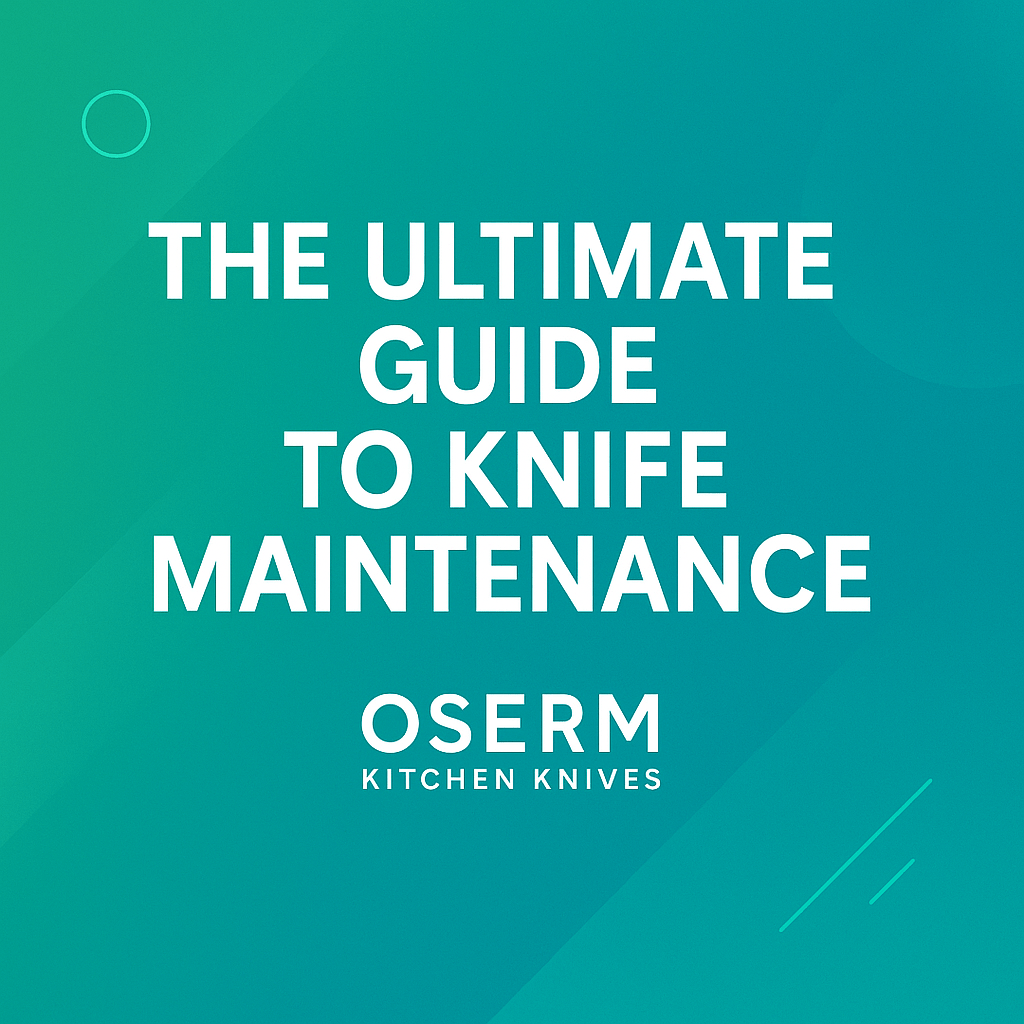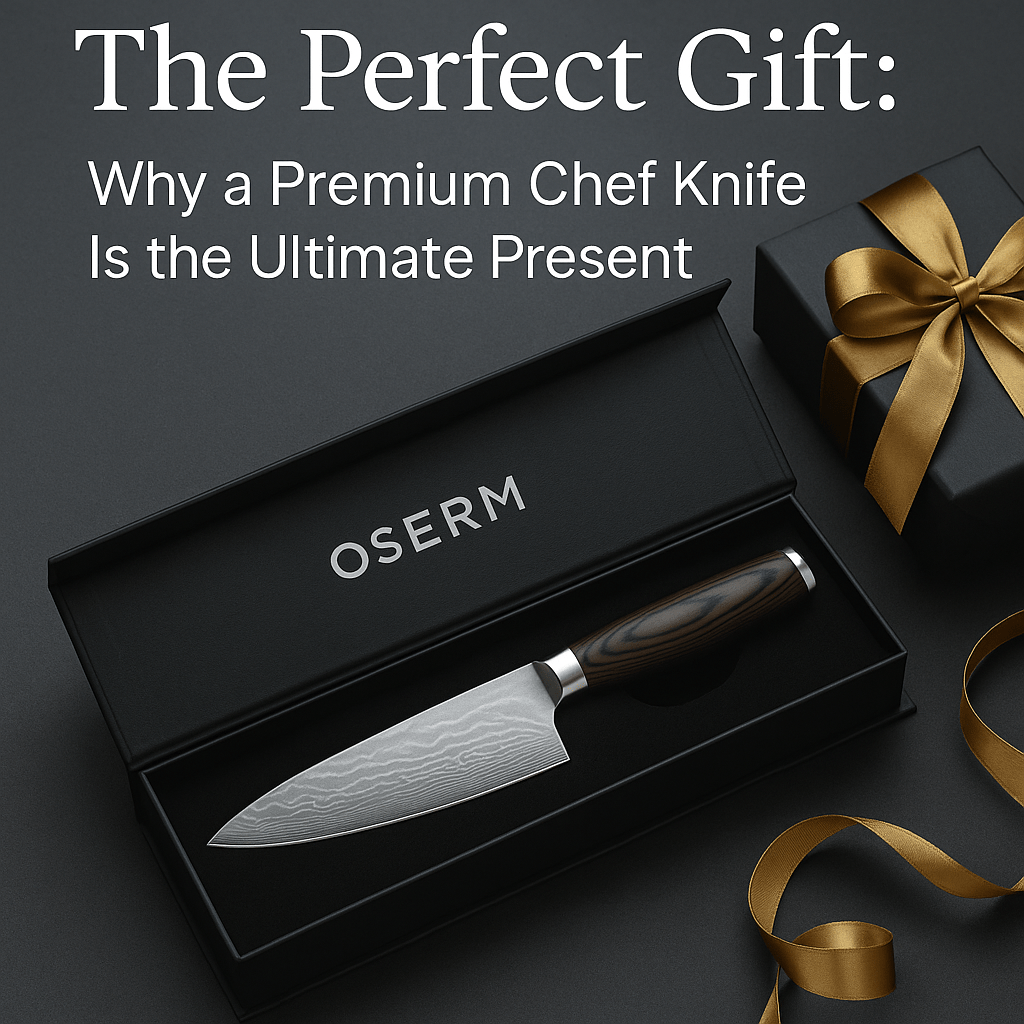
The Ultimate Guide to Knife Maintenance: Keep Your Blades Sharp and Lasting Longer
A great kitchen knife is more than just a tool — it’s the heart of your cooking. Whether you are preparing delicate sashimi, chopping herbs for a sauce, or carving a roast, the sharpness and reliability of your knife determine both efficiency and enjoyment. But even the best Japanese or Damascus steel knives need proper care to keep them performing at their best.
In this ultimate guide, we’ll walk through everything you need to know about maintaining your kitchen knives, from daily habits to advanced sharpening techniques. With the right care, your knives can last a lifetime while continuing to slice like new.
🔍 Why Knife Maintenance Matters
Knives endure a lot of stress during daily cooking — chopping through vegetables, breaking down proteins, or even cutting citrus that introduces acidity. Without proper maintenance, blades can dull, stain, or even chip. A poorly maintained knife not only reduces efficiency but can also be dangerous, as dull knives are more prone to slipping.
Consistent knife care ensures:
- Longevity: Well-maintained blades can last decades, saving money in the long run.
- Performance: A sharp knife makes precise cuts, preserving texture and flavor in your food.
- Safety: Sharp, stable edges are less likely to slip and cause accidents.
- Aesthetics: A polished, rust-free blade looks professional and adds pride to your cooking experience.
⚙️ Daily Habits for Healthy Knives
Knife care begins with everyday habits. Following a few simple rules can dramatically extend the life of your blade:
- Hand wash immediately: Always wash knives by hand with mild soap and warm water. Dishwashers can cause corrosion, dull edges, and handle damage.
- Dry completely: Moisture is the enemy. Wipe the blade dry right after washing to prevent rust and water spots.
- Use proper cutting boards: Stick to wood or high-quality plastic boards. Glass, stone, or metal surfaces will quickly dull your knife.
- Avoid twisting or prying: Knives are meant for slicing, not as a screwdriver or can opener.
- Store safely: Use a knife block, magnetic strip, or blade guard. Tossing knives in a drawer leads to chipped edges and accidents.
🔪 Sharpening vs. Honing — Know the Difference
Many people confuse honing with sharpening. They are related but different practices:
- Honing: Realigns the microscopic edge of the blade without removing much material. Done frequently with a honing rod.
- Sharpening: Actually grinds away metal to create a new edge. Done less often using whetstones or professional sharpeners.
Tip: Hone your knives every 1–2 weeks and sharpen them every few months, depending on usage. A well-honed blade requires less frequent sharpening.
🧱 Best Tools for Knife Maintenance
- Honing steel: Keeps the edge aligned between sharpenings. Choose ceramic or steel rods.
- Whetstones: The gold standard for sharpening. Different grit levels allow for coarse grinding and fine polishing.
- Pull-through sharpeners: Quick and easy, but can remove too much material if overused.
- Professional services: For high-end knives, an occasional professional sharpening can restore a perfect factory edge.
🧪 Step-by-Step: How to Sharpen with a Whetstone
Sharpening with a whetstone may feel intimidating, but it’s the most effective way to maintain a razor-sharp edge. Here’s a simple process:
- Soak the whetstone in water for 10–15 minutes.
- Place the stone on a stable, non-slip surface.
- Hold the knife at a 15–20° angle against the stone.
- Push the blade across the stone, edge first, as if slicing a thin layer off the surface.
- Repeat evenly on both sides until a burr (tiny metal fold) forms along the edge.
- Switch to a finer grit stone to polish and refine the edge.
- Rinse, dry, and lightly oil the blade to protect it.
💡 Advanced Maintenance Tips
If you own high-end Japanese or Damascus knives like OSERM’s, a little extra attention goes a long way:
- Oil carbon steel: If your knife is carbon steel (not stainless), apply a thin coat of food-safe mineral oil after cleaning to prevent rust.
- Avoid acidic foods lingering: Wash immediately after cutting tomatoes, lemons, or onions to prevent staining.
- Rotate usage: If you own multiple knives, don’t overuse one blade — spread the workload.
- Respect the edge: Avoid frozen food, bones, or hard rinds that can chip even the best blades.
🔧 Signs Your Knife Needs Attention
How do you know when it’s time to hone or sharpen?
- Food squashes instead of slicing: Tomatoes crush, herbs bruise, meat tears.
- You use more force: A sharp knife glides; a dull one requires pressure.
- Slippage risk increases: A dull knife slips more easily, making it unsafe.
- Paper test fails: Try slicing a sheet of paper — if it snags, it’s time to sharpen.
🏆 OSERM’s Commitment to Long-Lasting Sharpness
At OSERM, our Japanese-style knives are forged with precision and premium materials, from high-carbon Damascus steel to ergonomic, well-balanced handles. But even the finest knife benefits from good care. With this maintenance guide, your OSERM knife can remain your trusted partner for years — staying sharp, safe, and beautiful.
🎁 Weekly Deal
30% OFF + Free Mystery Knife with every OSERM knife set.
👉 Shop Now — Free U.S. shipping.
Tags: knife maintenance, how to sharpen knives, kitchen knife care guide, japanese knives, damascus steel knives, OSERM kitchen knives






